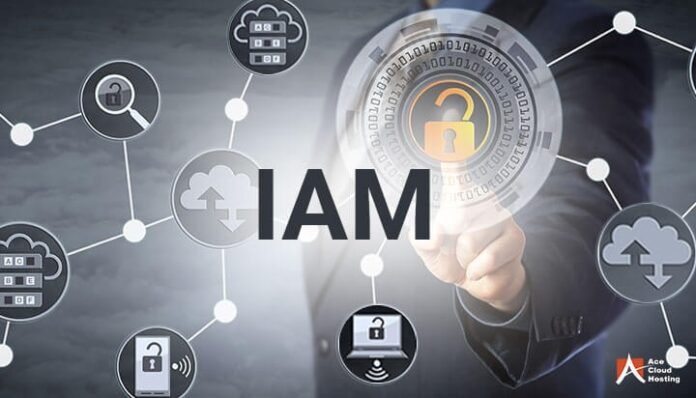IAM systems ensure that only the right people can access company data, software, and hardware. This includes employees working from home or on the go, contractors, and business partners.
To accomplish this, IAM processes and technologies must work together. This is referred to as the identity management lifecycle.
Authentication
Authentication is verifying a user’s identity, including passwords, biometrics, and other methods to prevent unauthorized access. Most people have used some form of authentication in their lives.A core component of IAM is an authentication database, which maintains a record of who should access which systems and data and matches login information like usernames and passwords against that list. IAM systems do this at a basic level, and the database must be kept up to date as users join or leave and their roles change.
The second component of IAM is authorization, which permits users to access files, data, and applications on the network. This complex process can include multiple tiers, with access services providing the lowest-level permissions for everyone (everyone is authenticated and authorized to be on the network). In contrast, higher-level security tools provide access to individual servers, folders, and files on the server or device.
Access
Authentication verifies that a person or something is who they claim to be. Access is the process of allowing that individual to do something on a system or network. This can include everything from software applications to physical hardware or IT resources in the cloud. Users must authenticate with the correct username and password to access one. This is the role of access management, which is also an important component of IAM.
As was previously said, identity management and access control refer to ensuring that only authorized personnel have access to corporate systems, hardware, software, and data. For any IAM architecture, safe authentication methods are essential.
IAM solutions are available for large enterprises and small and medium-sized businesses (SMEs). They can pick and choose from tools that automate the process, remove reliance on passwords, and enable a single sign-on to access data across multiple networks or devices.
When choosing a solution, businesses should consider how it can meet their cybersecurity needs and fit into their IT infrastructure. For example, many organizations must integrate their IAM system with unified threat management and other security products. In addition, the solution should provide granular visibility into who is on the network and how their device is configured through posture management. This helps prevent unauthorized escalation of privileges by ensuring the system knows the exact context of any access request.
Governance
Governance is the framework of policies, processes, and technologies that enable information technology (IT) managers to control access to digital identities. It includes systems for provisioning and de-provisioning, securing and authenticating identities, and providing authorization to access resources. IAM also includes privileged access management, which controls a user’s access to applications, networks, and system accounts.
Governance ensures that only verified entities access company resources like email, databases, data, and applications. In contrast, people who shouldn’t be able to access them, like hackers, are denied entry. A comprehensive governance program can help businesses manage risk, achieve compliance and IT effectiveness and maintain operational efficiency.
For companies to do business effectively, employees need secure and convenient access to internal resources and tools, whether in the office or working from home. IAM can provide that kind of access for employees by providing the ability to sign on once with a single ID and password and then easily move across applications, systems, and environments. It also helps to eliminate reliance on passwords and makes it easier for users to authenticate from any device, including laptops, desktops, smartphones, or tablets.
Privileged Access Management
A subset of IAM, privileged access management (PAM), addresses the specific security concerns that come with admin or superuser accounts. PAM provides a solution to lock down and manage these highly sensitive accounts that grant users access to critical systems and data. It helps ensure these accounts are not stolen or used for malicious purposes.
It also focuses on reducing human error, such as sharing passwords or mismanagement of accounts. These errors can cause catastrophic damage and are not confined to one user but affect multiple network accounts. For example, a single mistyped command from an admin account can have far-reaching impacts, such as accidentally deleting a database or modifying sensitive files.
Analytics
Analytics is one of the most critical aspects of an effective identity management system. It helps to prevent unauthorized access, alerts on malicious activities, and reduces the threat of damaging data breaches.
Data breaches occur when attackers gain privileged access to an organization’s systems, networks, or databases through compromised passwords and credentials. A good IAM program will minimize the attack surface by monitoring network access, ensuring data is encrypted during all stages, from handling to sending and receiving, and ensuring that only authorized individuals have access to PPI.
A good IAM solution will automatically manage user identities in various repositories across the enterprise and deliver a unified view of consolidated identity information to apps and other IT systems. It will also be able to support a variety of directories, including meta-directory and virtual directory models that merge disparate sets of identity data into a metaset and provide a two-way synchronization service to keep that meta-set in sync with other sources. In addition, it will support the use of OpenID Connect (OIDC) to add an identity aspect to 0Auth 2.0 authorization and allow businesses to authenticate mobile games, social media, and other apps using OIDC tokens.
Also Read About: LED Panel Lights – The Best Way To Light Up Your Home

